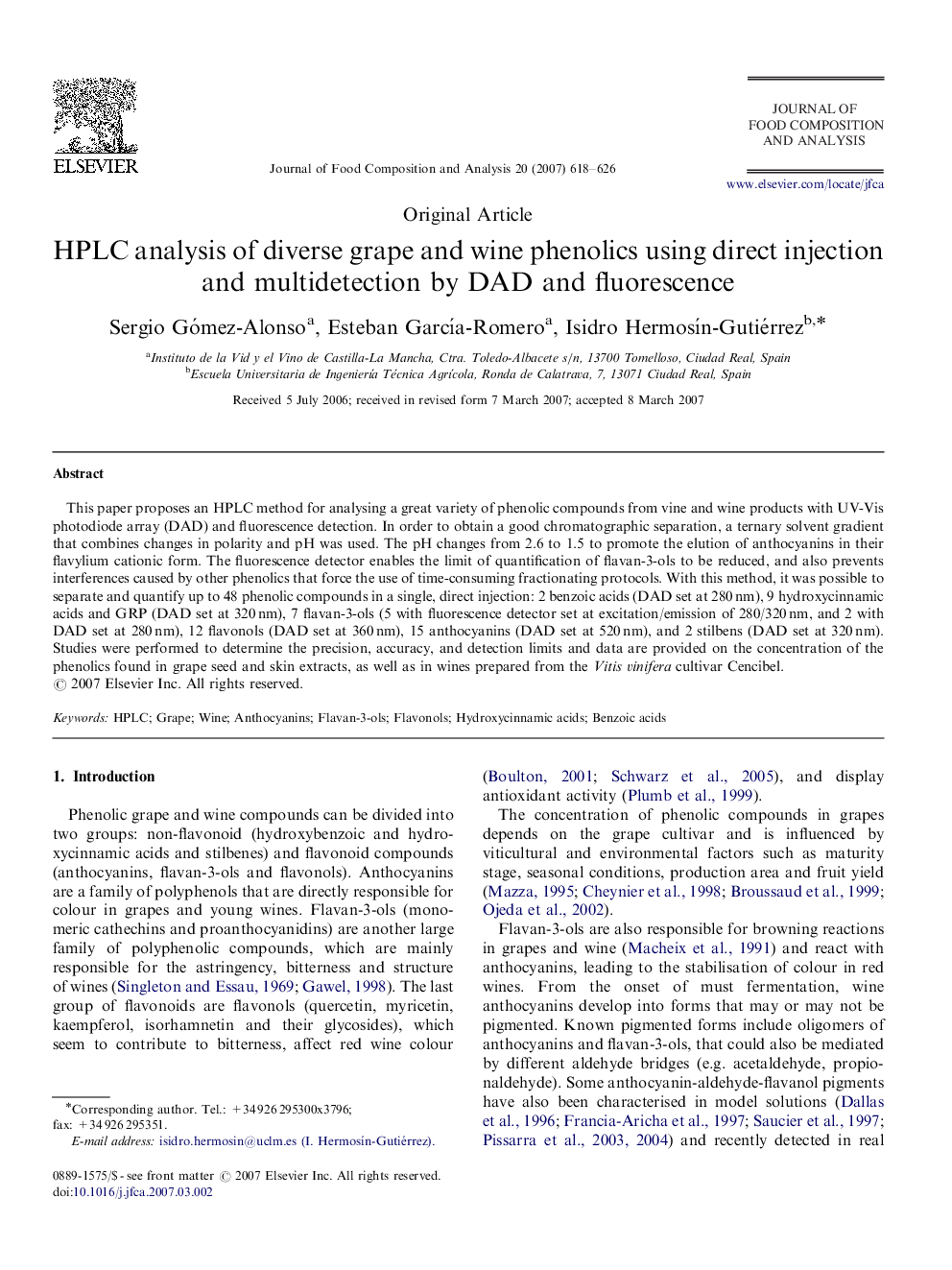| Article ID | Journal | Published Year | Pages | File Type |
|---|---|---|---|---|
| 1219235 | Journal of Food Composition and Analysis | 2007 | 9 Pages |
This paper proposes an HPLC method for analysing a great variety of phenolic compounds from vine and wine products with UV-Vis photodiode array (DAD) and fluorescence detection. In order to obtain a good chromatographic separation, a ternary solvent gradient that combines changes in polarity and pH was used. The pH changes from 2.6 to 1.5 to promote the elution of anthocyanins in their flavylium cationic form. The fluorescence detector enables the limit of quantification of flavan-3-ols to be reduced, and also prevents interferences caused by other phenolics that force the use of time-consuming fractionating protocols. With this method, it was possible to separate and quantify up to 48 phenolic compounds in a single, direct injection: 2 benzoic acids (DAD set at 280 nm), 9 hydroxycinnamic acids and GRP (DAD set at 320 nm), 7 flavan-3-ols (5 with fluorescence detector set at excitation/emission of 280/320 nm, and 2 with DAD set at 280 nm), 12 flavonols (DAD set at 360 nm), 15 anthocyanins (DAD set at 520 nm), and 2 stilbens (DAD set at 320 nm). Studies were performed to determine the precision, accuracy, and detection limits and data are provided on the concentration of the phenolics found in grape seed and skin extracts, as well as in wines prepared from the Vitis vinifera cultivar Cencibel.
